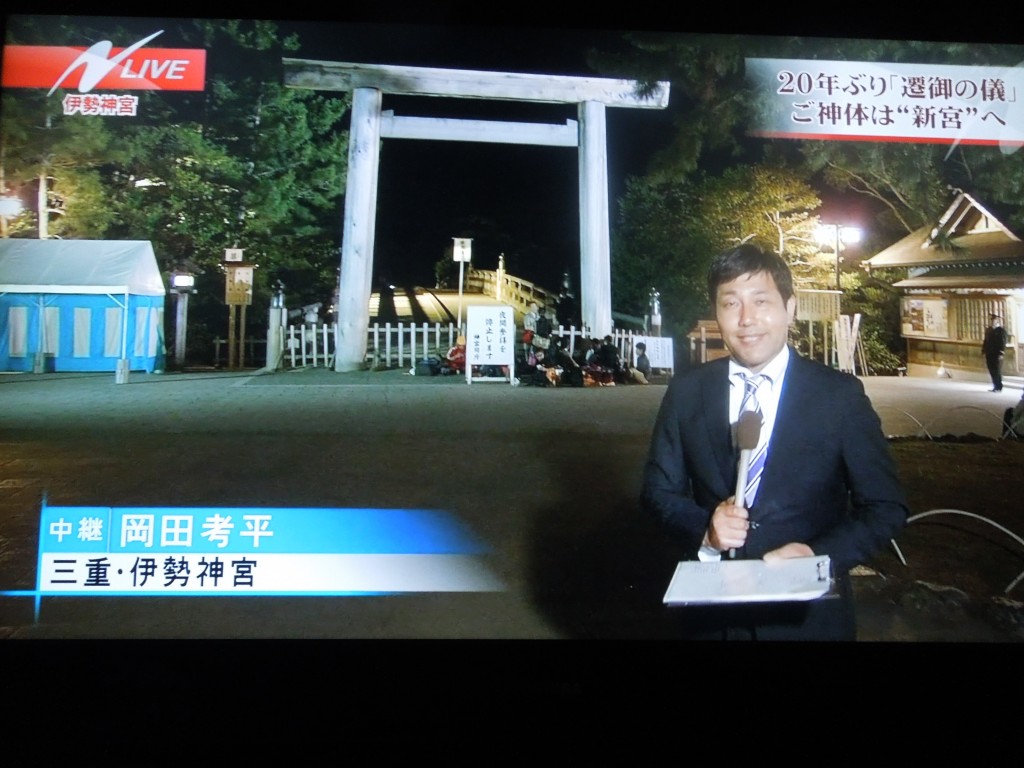
Ise has featured prominently in news programmes today, following the ceremony last night when the holiest 'spirit-body' in the land was transferred to its newly-built shrine. The shrine was closed off during the ceremonial transfer of Amaterasu's bronze mirror spirit-body, and the people in front of the torii are camping out all night so as to be first in when the shrine opens at 5 in the morning.
The climax of the 20 year cycle at Ise took place last night at 8 in the evening, and the event has been featured widely on the television news. The programme I watched had views of the torchlight moving of the ‘goshintai’ (spirit-body) of Amaterasu behind protective sheets, together with assertions of how special the occasion was, how important it was to keep up traditions, and how increasingly difficult it is to find the raw materials and skills necessary for the renewal.
Amongst those in attendance was the younger son of the emperor and the present prime minister. The rites are overseen by a princess priestess, daughter of the emperor, representing the old office of Saigu (for more about the post, click here.) Much was made of how the Ise renewal (shikinen sengu) represented a different view of life from the European church tradition, where belief is set in stone once and forever. Mention was made too of how this year coincides with the Izumo renewal programme, and that therefore it signifies a time of big change.
The renewal programme is an astonishing affair, which comprises much more than simply removing the kami’s spirit-body to a new shrine. (For a previous posting on the subject, click here.)
Completed in eight years, the renewal process requires 14,000 pieces of timber, 25,000 sheaves of miscanthus reeds, and 122,000 shrine carpenters; this massive project reconstructs over sixty structures, including the Main Sanctuaries of the Inner and Outer Shrines, treasure houses, offering halls), sacred fences, torii gateways, the buildings of fourteen “auxiliary sanctuaries”. All offerings of vestments and sacred treasures presented by the imperial family are also replaced.
The first example of the replacement of imperial offerings dates back to 849 but the shrine’s current list totals 714 categories consisting of 1,576 articles (189 categories comprising 491 sacred treasures and 125 categories comprising 1,085 vestments). This diverse range of objects can be divided as follows. Vestments include room fittings, “kami seats” and rugs, furnishings, and ritual artifacts for the “transfer of the deity” (Sengyo) ceremony.
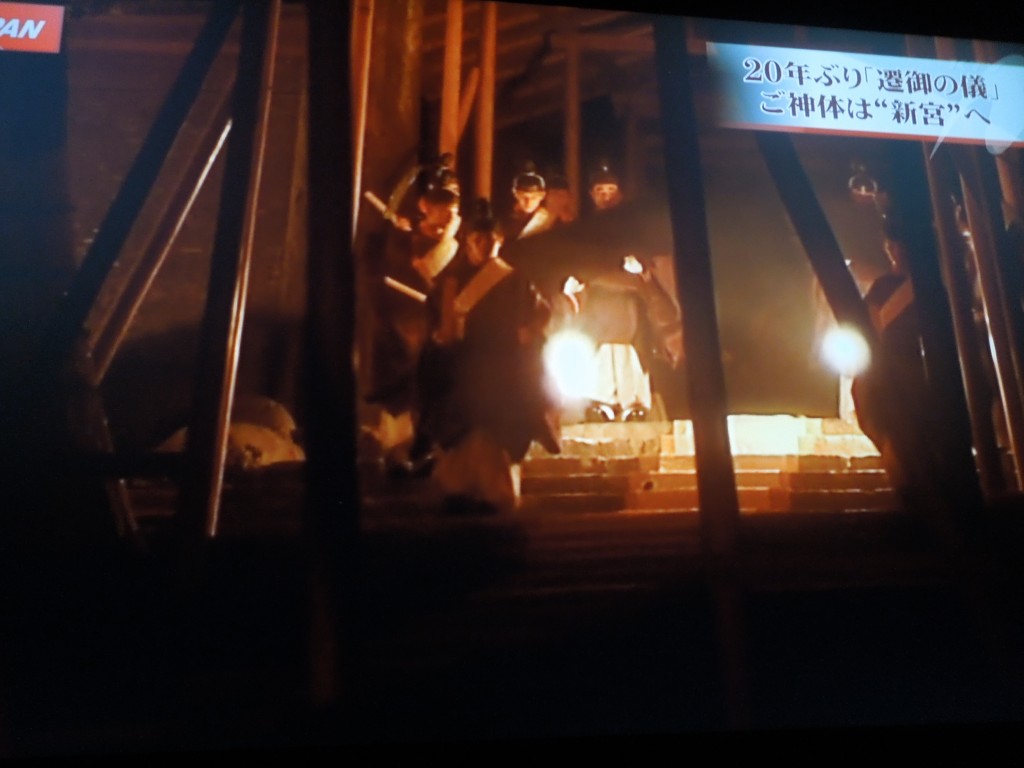
- Priests move by firelight prior to the removal of the kami’s spirit-body
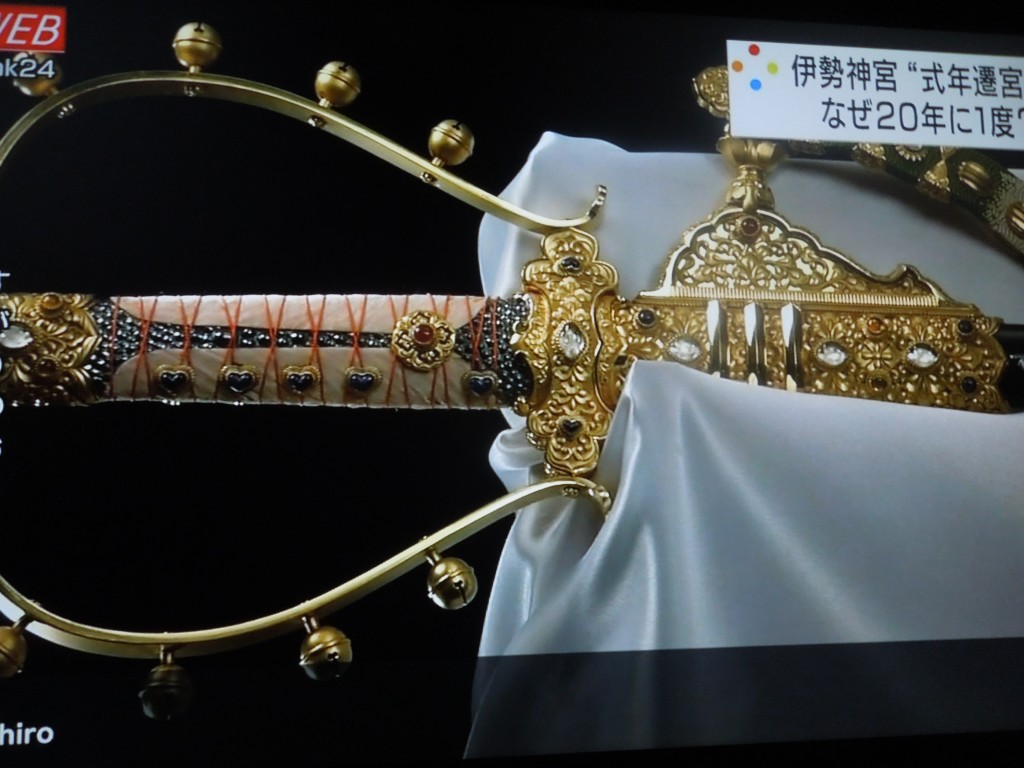
Close-up of a jewelled sword, one of the hundreds of articles that are renewed every 20 years
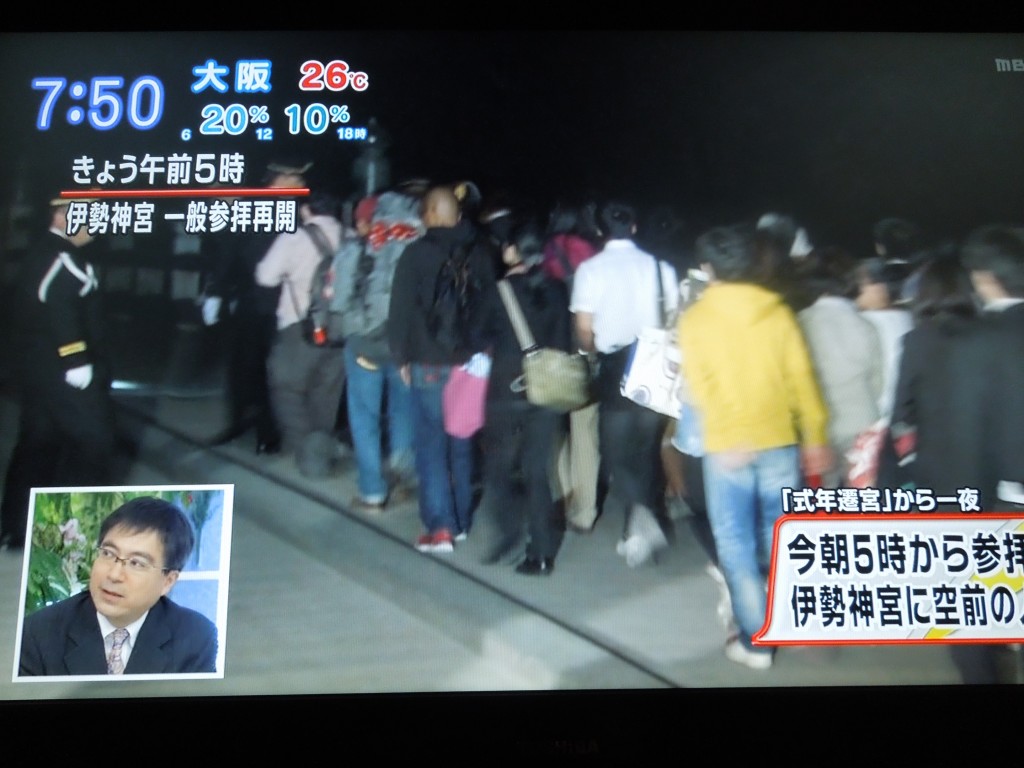
Crowds pouring in to the newly consecrated shrine in the early morning
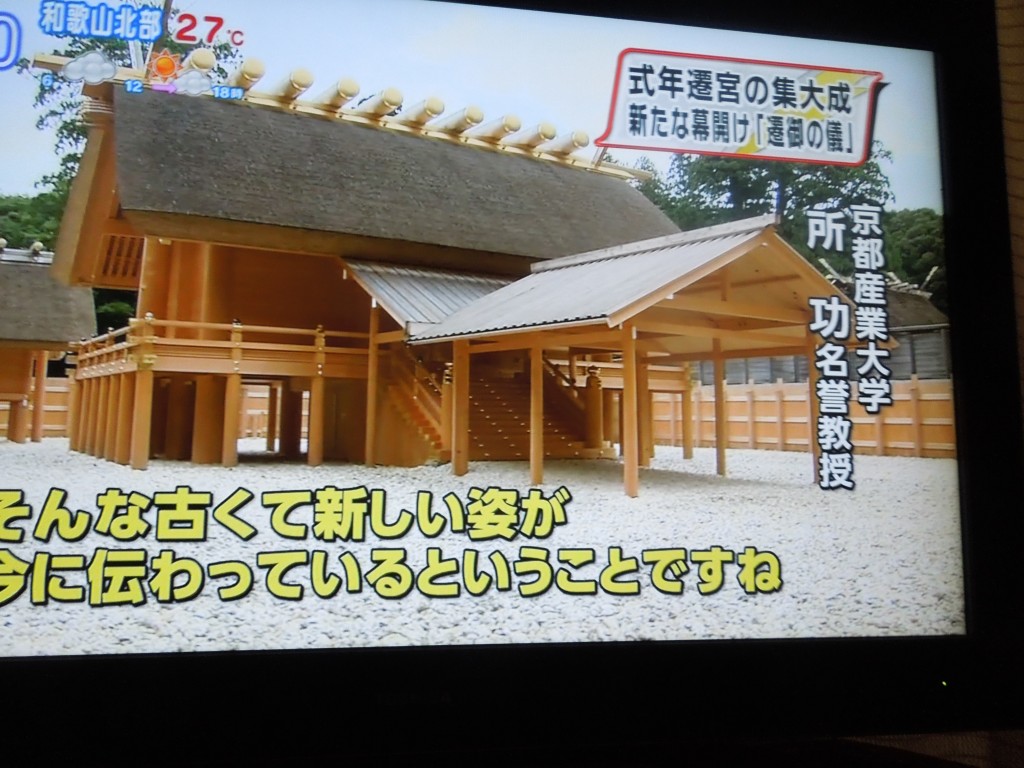
One of the many newly rebuilt shrines – passing on the concept of renewal to a new generation
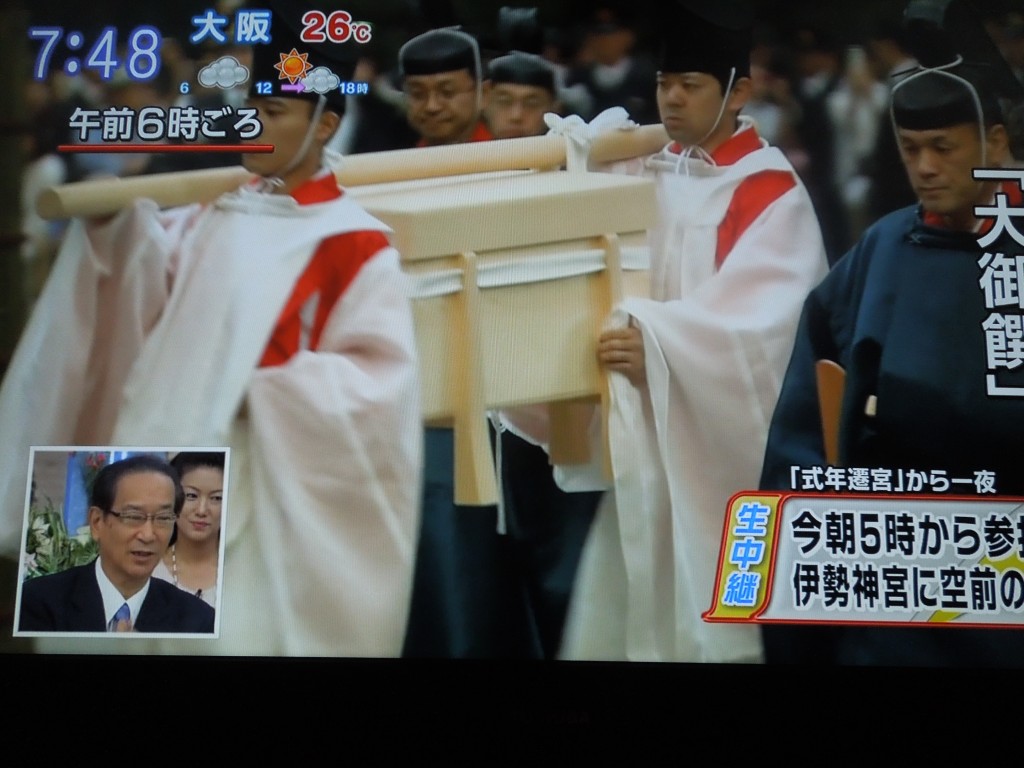
Priests carry one of the hundreds of renewed offerings
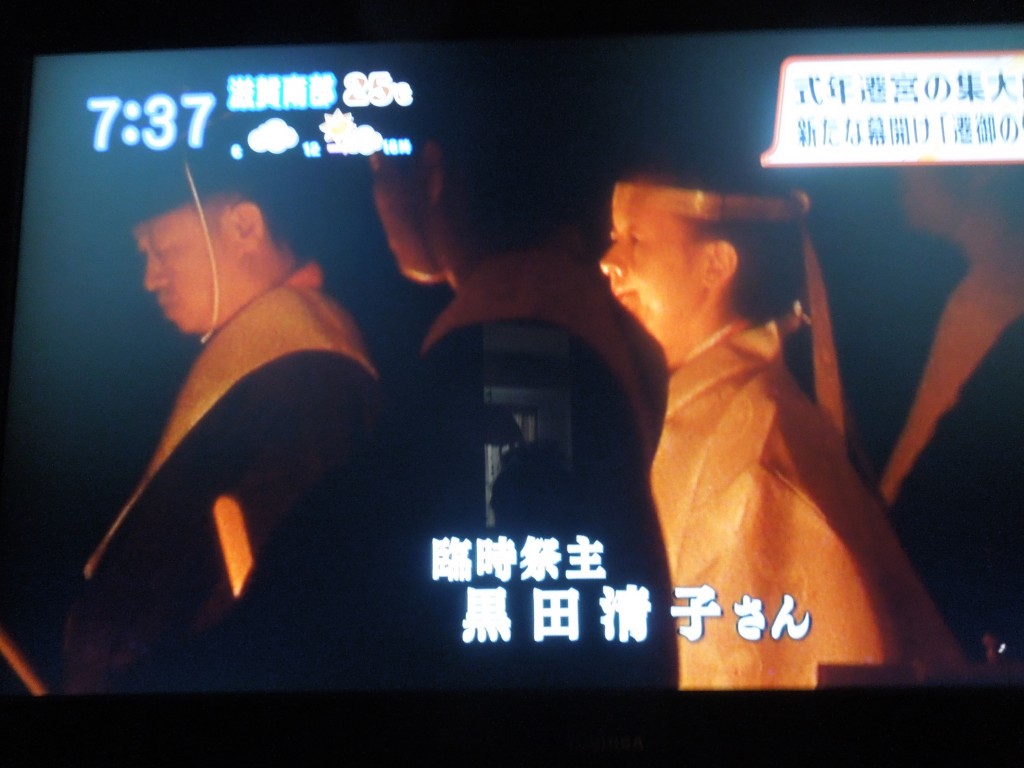
Kuroda Sayada, daughter of the emperor, is the princess priestess appointed temporarily to oversee the renewal rites

Leave a Reply